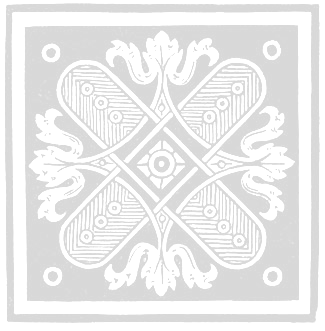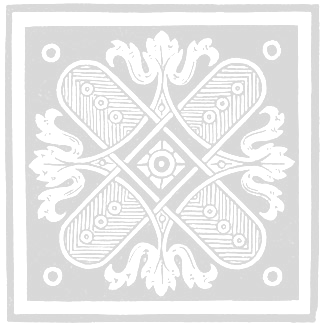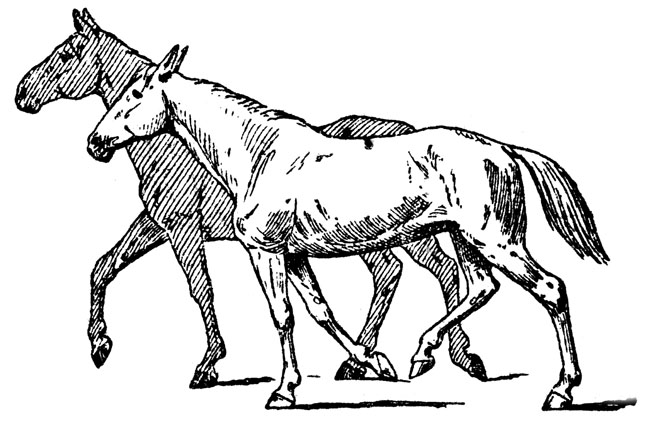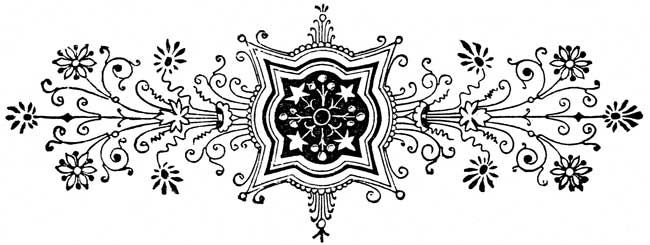she was a very confident and strong willed mare.
She had also been neglected when she arrived at
our farm. She was starved and underweight. Her
first priority was to eat and she seized every
Human Equine Relationship Development
H.E.R.D -56-opportunity to do so. This was in the best interest
of her survival, she needed to gain weight. A
skinny weak horse will not survive as long as one
at a healthy weight. A horse knows that in order to
get the best food they need good pasture and a
herd to keep them safe. That is pretty simple.
My niece like most kids wanted to ride her
new horse and as soon as the mare got a little
weight on her and had her hooves trimmed we
saddled her up. This horse was very herd bound.
No matter what you did, the day ended with her
running off back to her pasture and friends.
The experience for my niece was
frightening. Having a horse out of control while
you are on its back is a little nerve shattering for a
novice rider. But my niece stuck with it, she didn't
give in. It took some time and a lot of patience but
eventually this horse stopped its shenanigans. It
stopped them as she started to understand that
my niece who was only 12 at the time could lead
her with confidence.
You need to approach every situation with
unshakeable confidence. Training isn't isolated to
the round pen. Training happens in every aspect
Human Equine Relationship Development
H.E.R.D -57-of horse handling. It is interwoven into the fabric
of horse ownership. The lead mare never gives up
her position, not for a minute, she maintains
control at all times and so must you. There is no
in between position in the horse world, you either
are the leader or the follower. You must prove
your leadership ability. If you submit for just a
minute, you will have to reestablish your role as
leader. This is all they understand.
I think it is really unfair to the horse when
we try to superimpose our beliefs and behaviors
onto them. This is just totally confusing and
unfortunate for the horse. A horse is so simple it
is hard for the human being to understand them.
They are simple and honest.
Imagine if someone put you on a plane and
dropped you off in China. You don't speak a word
of Chinese and you have no idea what is socially
and culturally acceptable. It would take time and
effort to adapt. You wouldn't just expect everyone
to convert over to English and go by your social
standards. You must think the same way about
the horse. You have to learn what they find
acceptable and adjust yourself in order to
Human Equine Relationship Development
H.E.R.D -58-communicate easier.
Now there are "old school" horsemen who
believe this is all nonsense, a horse can learn to
adjust to our way of thinking. And it is a sad truth
that yes they can. It is a tribute to the horses great
intelligent and submissive nature that they will
eventually learn the ways of man to some degree.
They will learn them as much as they need to
survive.
As the higher thinking being it is easier for
us and more effective to learn their language and
behaviors. It cuts down the stress placed on the
animal and has far superior results in the end. It
creates an animal who understands from the get
go what is expected rather than stumbling
through trial and error until they feel their
behavior is accepted. It is a different kind of work
and it is far more compassionate than beating an
animal into submission or tiring it out so severely
it finally submits to our will.
So lets go back to the lead mare again what
is she saying and how is she saying it. A horse has
two business ends. The head and the rear end.
They use their head in a multitude of ways
Human Equine Relationship Development
H.E.R.D -59-to speak to the other horses. A head that is raised
and ears that are erect says I am alert for some
reason. You will notice that all of the other horses
will raise their heads and follow in suit
concentrating on what she is looking at. A head
that is lowered and ears that are relaxed says I am
relaxed. The bottom lip often hangs a little lower
and she may have her weight shifted off of one of
her back legs, this is saying I am relaxed. Her eyes
may also look soft almost like they could close at
any second. The lower the head the more relaxed
she is. You will notice when the lead mare is
relaxed the rest of the herd is as well. Some may
graze while others rest right along with her. This
is a nice quiet time in the herd.
Ears are a major part of communication in
the horse. Ears that are pinned flat back says I am
angry and you need to move. This is often
displayed before a bite is issued. Horses normally
give a warning then deliver with an action. This is
the case most often but sometimes the final
punishment is just dealt out in acts that the leader
feels deserve no warning. Ears pinned back says I
am really unhappy about you being in my space,
Human Equine Relationship Development
H.E.R.D -60-move now or your gonna get it. Ears pinned back
and mouth open says I am going to bite you now.
Sometimes you will witness the snaking of
the head along the ground as a warning that a
horse is angry and about to try and dominate
another. Ears tell you what the horse is paying
attention to as well. A horse can position one ear
on you, listening to what is going on as you
tighten the girth for example, and use the other
ear to be listening to what is going on in front of
it. An ear that is cocked to you means they are
paying attention to you and that is good.
If you start just observing your horse,
sitting quietly off to the side and just watching,
you will start to notice that their language is
almost undetectable but still very effective. The
way they speak to each other sets an example for
the human who wishes to interact with them. A
horse will say what it needs to say, deliver
correction if need be, and then goes on with its
life. It is quick and over within a few seconds. The
horse who is being spoken too has just seconds to
listen and react. Failure to do so ends with
correction of either a bite, a bump, or a kick. Once
Human Equine Relationship Development
H.E.R.D -61-the correction has been servedthier lives resume.
This is the way they understand dealing with
issues.
A horse that does something wrong to a
human may receive a multitude of punishments.
Humans will turn them in circles, lunge them,
lock them away in the barn or yell and scream at
them. All of which the horse doesn't truly
understand. They understand the energy coming
off of the human probably better than the
punishment. Usually when a human is angry,
their facial expression is more tense. Their
movements a little more exaggerated. Their voice
becomes louder and more angry. This body
language is all that is telling them they did
something wrong.
Correction of a horse should mirror that
dished out by the lead mare. Swift, immediate,
and in appropriate amount to the offense. Once
the correction is served life goes back to normal.
That is all that is needed. This is just too simple
for humans to comprehend at times. I think
humans feel like a horse is so big that they have to
beat it to have an effect on it. Remember a horses
Human Equine Relationship Development

H.E.R.D -62-skin is so sensitive, it can feel the tiniest fly on its
withers. Just because they are a large animal
doesn't mean it takes massive amounts of
correction to fix an issue.
I think that the traditional ways of making
a horse run in circles or jerking around on the
horse just release the frustration the human is
feeling toward the horses offense. The horse only
learns you are angry, at best you prove some sort
of haphazard dominance over them, at worst you
hurt the horse and produce fear.
A correction to the nose when a horse is
about to bite when done quickly and assertively
corrects the problem and then you just resume
what you are doing. The horse understands this.
He tried to assert himself over you and you in
return told him that was not happening. You have
about 3 seconds to do so. I think even quicker is
better. It needs to be instantaneous. There is no
time to run to the barn for a crop or a lunge line.
If it takes longer than 3 seconds he will have no
idea as to why he is being corrected.
Human Equine Relationship Development
H.E.R.D -63-So lets talk about correction and what that
means. A lead mare will first warn the other
horses, or direct them, as too what she wants
done. She strolls up and they need to move aside,
lets take feed time for example. Her food is
poured in her bowl and another horse dives in
and gets a mouthful of grain. She comes charging
with confidence, ears pinned back. All of her body
language is saying move. Usually the horse
quickly retreats happy to have just stolen a bite of
free food. But if he sticks around a second too
long he is going to either get bit or kicked and she
will have no sympathy in how she does it. She
warned him, he didn't leave, so he will be
physically corrected. If he is so stubborn to stand
there and ignore her, she will dull out whatever it
takes to make him move by amplifying the
strength of force until he finally retreats. Usually a
horse that is settled into the herd only needs the
look of her coming and ears pinned back to know
he needs to beat feet and make a retreat.
So enters the human into the equation. We
are so much smaller and inferior physically to the
horse. They could squash us like a bug if the
Human Equine Relationship Development
H.E.R.D -64-wanted too but they don't realize that. To them we
are just as powerful as they are unless proven
otherwise. Which means we need to take careful
precaution to never reveal this little secret. A
horse kick can exert up too 400 pounds of force
and an average human can kick is about 88
pounds of force. If you get into a kicking match
with a horse, you will lose. When the lead mare
kicks at her followers she isn't holding anything
back. She goes at them often with both guns
blazing. Let's talk about the other business end of
the horse, the mouth. If you have ever had the
misfortune of being bit by a horse you know it can
be brutal. They have to have their teeth come
together to reopen their mouth and it is very
painful to be bit by one. Usually you have a huge
circle bruise and maybe even broken skin.
This is where I find correction to be a
major issue. It is socially unacceptable to slap or
hit living creatures in human society. Remember
all the talk about balance before, here balance
becomes imperative. I will slap a horse in the nose
for trying to bite, trust me, usually my fingers hurt
worse than his nose. I will also slap a horse on the
Human Equine Relationship Development

H.E.R.D -65-neck when it refuses to follow. My little slap
doesn't hurt the horse it is more of a stimulus to
snap them out of the mental rut they are in. I will
threaten, more often than not, just like the lead
mare does.
Force exerted to the rear of a horse drives it
forward. I am not talking about actually whipping.
All you need is to have a crop in hand and go
towards the rump as if you will use it. The horse
will usually heed the warning and begin to listen
and obey. You rarely actually have to make
physical contact if you are an established leader.
Just like the lead mare need only twitch her tail a
certain way to make the horse behind her flee
before she actually has to kick it. But if the threat is left unheeded then yes you must quickly follow
through with the correction. If you do this
faithfully your horse will heed the warning sign
and be obedient rather than accept the correction.
Human Equine Relationship Development

H.E.R.D -66-
The rules to correction are as follows:
1. Give the warning if possible. (if a horse is
trying to bite you or kick at you no
warning is given, correction is quickly
and fairly dispersed and then you just go
on about your business like nothing
happened)
2. In the case of a disobedient situation (ex.
won't load in trailer when normally has
no fear, won't move out of your way at the
gate) where you have given the warning
and the horse ignores you follow up with a
correction of your choice.
3. Immediately go back to normal the second
the horse starts to even make the slightest
movement towards obedience. If it doesn't
repeat the above steps increasing the
intensity of correction until he/she moves.
Never correct your horse when you angry.
Human Equine Relationship Development
H.E.R.D -67-This is where correction can easily slip into abuse.
Walk away and cool off!
Correction to a horse is natural. The
correction it receives from a human pales in
comparison to what it will receive from it's
horsemates. I have heard a lot of people talking
about how you should never have to discipline a
horse with force. Horses are like children if
brought up correctly over time you will no longer
need to correct them. They are learning every step
of the way, just as you are. If a horse is not
corrected swiftly it will repeat its behavior again
and again and this can turn into a very serious
problem if left unchecked. Think of the long term
implications for the horse and remember horses
with behavior issues have a less likely chance of
having a satisfying life.
I am a stern advocate of animal welfare. I
believe that we are stewards for are four legged
friends. Beating a horse, tying it up for hours on
end, or applying any of the other archaic torture
training techniques used in the olden days of
horsemanship to me is inexcusable.
I am a firm believer in balance in
Human Equine Relationship Development
H.E.R.D -68-correction. Correcting out of a desire to better the
animal, not my image. Many of the old timers act
as if they have something to prove to others about
how they can handle any horse. The truth of the
matter is that most horses will submit to a beating
but that doesn't make it right. Most problems can
be resolved with consistant, humane correction,
faster and easier. The sad truth is that most of the
old time correction methods may have
temporarily solved one issue but in it's place left
several new problems.
A firm approach is needed when dealing
with an animal of this size and strength but
crossing over into abusive beatings with boards
and sticks just crosses the line from correction to
abuse. It is really important to note that before
any of this you must take each behavior and
examine it.
Most of the time reluctance to do
something is fear based. When disobedience
comes from fear you must lead your horse
through the situation without increasing the
anxiety by your behavior
Lets take for instance a situation in which
Human Equine Relationship Development
H.E.R.D -69-you are riding along on a trail ride. The sun is
shining, the birds are chirping, and your horse is
just walking along. All the world seems beautiful.
Then all of a sudden up goes the head and the ears
as you approach a pile of logs left alongside the
road.
Your horse is on high alert, she starts
stepping to the side rather than moving forward.
She trys with all her might to turn you around
from the woodpile. You try comforting her by
talking to her. You reach down and pet her neck
but she stops dead in her tracks and just stares.
Her whole body is tense. You keep talking trying
to soothe her but it has no effect. She is positive
this is a bad situation and that the wood is going
to jump up and eat her alive.
This problem could be the wood, it could
be a smell being given off by the wood or it could
be a snake she hears deep down inside the pile.
Who knows exactly what it is about it but she is
afraid. You try to move her forward giving her a
little sqeeze to the sides but she doesn't budge.
You give a sharper more direct kick and she
budges only a few steps. She moves her head up
Human Equine Relationship Development
H.E.R.D -70-and down. Her eyes are wide and she is trying to
smell as she sucks in the air, she is checking it out
easing into it. You continue to talk to her and she
reluctantly moves forward bit by bit. Just as you
think you are going to get her through it, she
whirls around and trots away as you are pulling
back saying whoa.
You get her straightened out again and try
to get her to make the pass one more time, still to
know avail. Now you could kick the crap out of
her sides, and whip her rear in an effort to prove
you are the boss, or you can do what I would do.
Get off and walk her through it.
That is right get off. Now here I can hear
the chatter, never get off the horse, ride them
through it at all cost. I get off and start to pet her
neck and she will instantly relax. You can almost
hear a sigh of relief as she exhales. I take the
reigns in my hand and I walk before her. Talking
to her all the while and consoling her with a voice
that lets her know I am not afraid. I walk slowly
and confidently never even really paying any
attention to the pile. I look straight ahead and
keep her moving. She trusts me as her leader so
Human Equine Relationship Development
H.E.R.D -71-she falls in right behind me. I can hear her behind
me trying to smell the pile. I can feel her turn her
head to look at it as we pass, but I don't. I look
straight ahead and keep on going.
When we get past the pile we walk for a
little more distance and we turn around. I repeat
the process staring straight ahead, talking to her,
but not even looking at her. I just keep moving
forward. This time there is less smelling and her
head stays straight. We pass the pile in the
opposite direction and we stop right in front of it.
And there we stand. I am looking straight ahead
still. If she trys to look behind her, I will repeat
the pass again. If she doesn't look back we will
walk a couple of steps up and I will remount her
and this time ride her past, once again paying no
attention to the pile. And there in a few minutes of
my time I have lead her through a fear. I could
have forced her to pass the pile but I didn't need
to force her. I took the time to lovingly teach her
that there was nothing to be afraid of after all.
By doing it this way she learned her lesson
and I have reinforced my status as a competent
leader. Everyone has won. Some people do not
Human Equine Relationship Development
H.E.R.D -72-understand my way of doing things and I do not
understand theirs. Quite honestly I doubt I ever
will. I am confident in what I am doing and it
works.
I have been at a few horse shows and
witnessed people flipping out on their horses
because the horse does something like refuses to
go around a barrel. I have sat and watched as the
human would kick with spurs, whip and try to
force the horse to move on around it. It always
seemed to me though this was more of an effort
on proving something to the crowd about their
horse skills than teaching the horse anything.
If you ever find yourself in this mindset of
putting other peoples opinions of you above the
welfare of your horse, it is time to take a breather
and think about what will be in the best interest of
the relationship.
Human Equine Relationship Development

H.E.R.D -73-
Good Leadership Qualities
Confident
A good leader is confident in his ability to get a job done. He has an inner awareness of the personal strength he
possesses and is able to put trust in his own ability. In other words, he knows he can do anything he puts his mind too.







